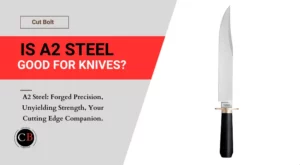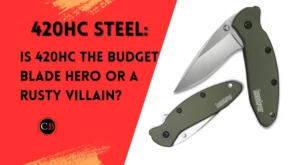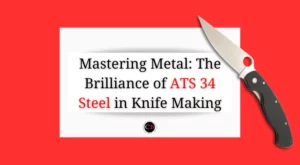Confused about 5Cr15MoV steel? You’re not alone. This mysterious metal lurks in countless blade descriptions, a budget option praised for sharpness but whispered about with chipping concerns.
Is 5Cr15MoV steel good for knives?
Fear not, fellow knife enthusiasts! Let’s crack the code of 5Cr15MoV, dissecting its chemical makeup, hardness secrets, and real-world performance. Does it deserve a spot in your knife arsenal? Prepare to sharpen your knowledge and slice through the hype. Dive in with us for the ultimate guide to this intriguing steel.
Key Takeaways
- Budget Bite: Sharp performance at a friendly price, ideal for everyday kitchen tasks.
- Edge Erosion: Loses sharpness faster than premium steels, requiring more frequent sharpening.
- Tough Cookie: Resists moderate stress and bending, avoiding easy breakage.
- Chipping Concerns: Prone to chipping if improperly heat treated or used on hard materials.
- Sharpening Savvy: Easy to sharpen at home due to its softer nature.
- Quality Quest: Seek reputable manufacturers for proper heat treatment and optimal performance.
- Maintenance Matters: Regular sharpening and honing keep its edge singing.
- Know Your Needs: Weigh its pros and cons against your desired knife performance and budget.
What is 5Cr15MoV steel?
5Cr15MoV steel is a low-end steel from Chinese production. It is the Chinese equivalent of the German X50CrMoV15 steel, one of the most popular steels in German mass-produced kitchen knives. Occasionally it is listed as AISI 440A, but the specifications are quite different, especially the chromium content. Typically it is hardened to 54-56 HRC and the larger the knife, the softer the steel.
There is no reason from a technical standpoint why this alloy should be 54-55 HRC, even for a 10-15cm kitchen knife. However, people do not want to harden it higher, to avoid future problems with improper use and to reduce production costs.
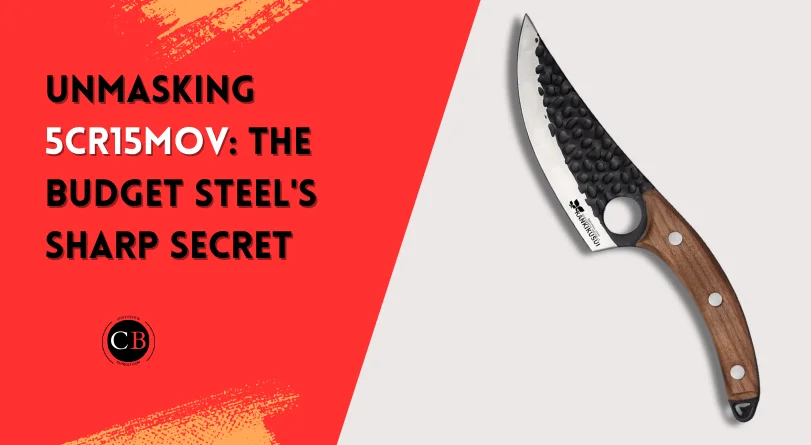
Other designations and standards of 5Cr15MoV steel
5Cr15MoV steel is alternatively available under these designations:
| Standards | Proprietor |
| AFNOR Z50CD15 | Eurotechni Nitrocut NCV60 |
| AISI 420MoV | Eurotechni NCV60 |
| DIN X50CrMoV15 | Metal Ravne PK5 |
| GOST 50KH14MF* | Ossenberg RFSh5 |
| GOST 50X14MF* | Thyssen-Krupp 4116 |
| JUS C.4770 | Ugine & Alz UGINOX MA5MV |
| UNE F.3422 | Ugine & Alz MA5MV |
| W-Nr 1.4116 |
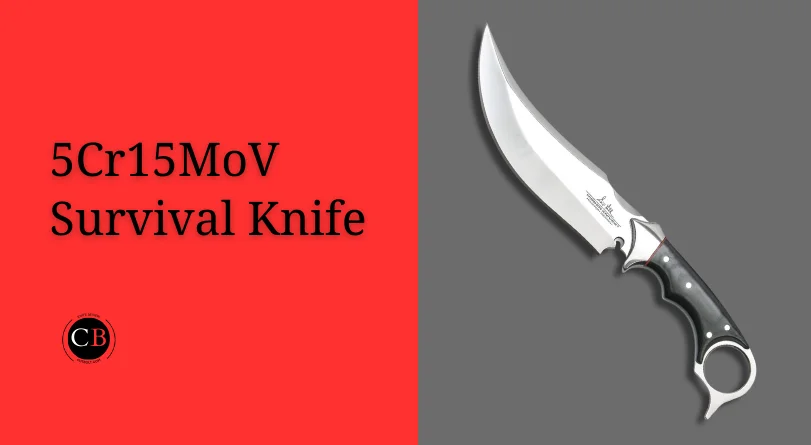
5Cr15MoV steel chemical composition
| Element | Portion | Effect |
| Chrome | 15.0% | Improves wear resistance, heat resistance and scale resistance. It increases tensile strength because it acts as a carbide former. Use of rust-proof or stainless steel, as it increases corrosion resistance from a mass proportion of 12.2%. Reduction in weldability. |
| Carbon | 0.5% | Increasing hardness and tensile strength. In larger quantities, increase in brittleness and a reduction in forgeability and weldability. |
| Manganese | 0.4% | Improves hardness and tensile strength. |
| Molybdenum | 0.6% | Improves hardenability, tensile strength and weldability. Reduction in forgeability and ductility. |
| Vanadium | 0.1% | Increasing hardness, increasing wear resistance and improving tempering resistance. |
As you can easily see, the chemical composition of 5Cr15MoV steel is a mixture of moderate carbon content, high chromium content and small amounts of other metals that selectively improve its properties.
What is the hardness (HRC) of 5Cr15MoV steel?
The typical hardness of 5Cr15MoV is generally 54-56 HRC. However, 5Cr15MoV steel can easily reach higher hardness levels, but in practice, this is usually not done, mostly for economic or production reasons.
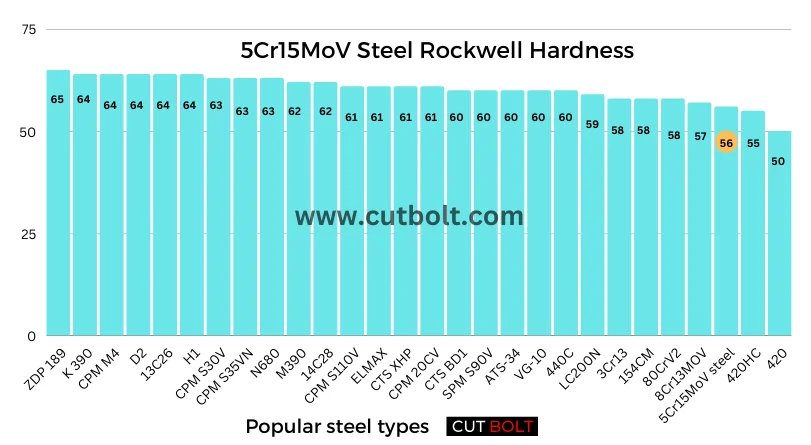
Is 5Cr15MoV stainless steel?
5Cr15MoV steel is both rust-free and stainless steel. To be considered stainless, it must have a chromium content of at least 10.5 – 13% dissolved in austenite or ferrite, depending on the definition (see here), which is the case with 5Cr15MoV. Also, it is a stainless steel because its sulfur and phosphorus content (so-called iron companion) does not exceed 0.025% (see here).
Properties of 5Cr15MoV
According to the chemical composition and hardness of 5Cr15MoV steel, it has the following properties and characteristics:
- Edge retention: 5Cr15Mov offers decent to good edge strength, and therefore good edge retention. But not the best, as the steel is not overly hard due to its moderate carbon content.
- Corrosion resistance: With a chromium content of more than 15%, 5Cr15MoV offers excellent resistance to corrosion.
- Wear resistance: Due to its carbon, manganese, molybdenum and vanadium contents, which positively affect hardness and hardenability, the wear resistance of 5Cr15MoV steel is decent to good. However, as mentioned, it is not overly hard, the high chromium content takes care of that.
- Sharpness: The rule is that the harder the steel, the harder it is to sharpen. 5Cr15MoV is easy to sharpen because it is comparatively soft.
- Toughness: 5Cr15MoV steel is known for its balanced composition, providing a combination of hardness and toughness suitable for various cutting applications. The steel exhibits decent toughness, making it suitable for knives and cutting tools. However, the exact toughness can be influenced by factors such as heat treatment and the specific application of the steel. 5Cr15MoV contributes to its ability to withstand impact and resist chipping during use. It’s often used in budget-friendly knives where a good balance between hardness and toughness is desired.
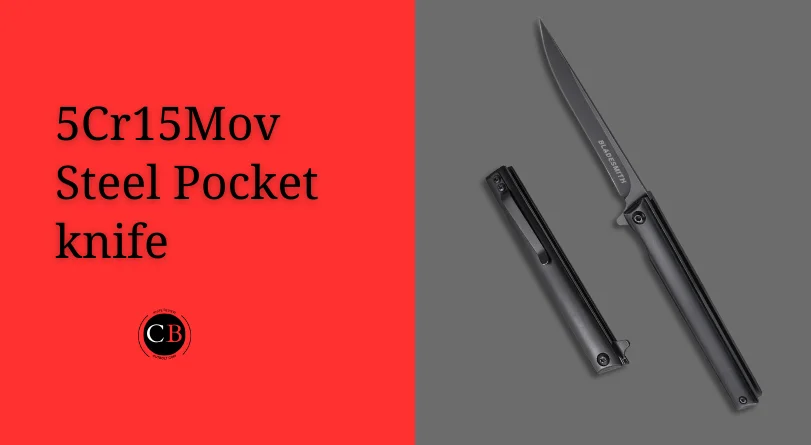
Cons of 5Cr15MoV steel:
- Chipping: Prone to chipping if not properly heat treated or used on hard materials.
- Not high-performance: Doesn’t reach the sharpness or edge retention of premium steels.
- Limited availability: Not as widely used as popular knife steels, making finding high-quality options tricky.
- Polishing difficulty: Achieving a mirror polish can be challenging due to its softer nature.
Is 5Cr15MoV steel good for knives?
Yes, 5Cr15MoV is a good steel for kitchen knives because it has good corrosion resistance and is easy to sharpen. This makes it a great knife for chefs, but also for anglers, fishermen and so on.
However, as an EDC knife or for general outdoor use outdoors (hunting, hiking, camping, etc.), there are certainly better knives out there.
Since 5Cr15MoV steel is not a particularly hard steel, it gets dull relatively quickly. On the other hand, it is very easy to sharpen just because of its lower hardness. That’s why it can be quite an option for those who aren’t too shy to pack a whetstone and take it off occasionally.
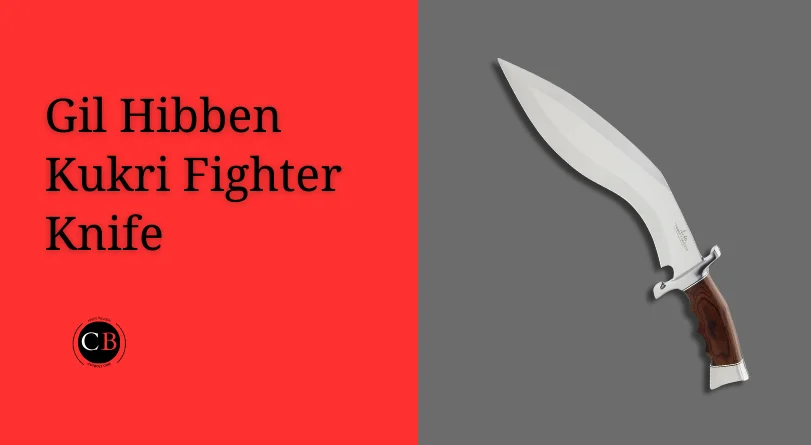
Related: 7Cr17MoV steel review
5Cr15MoV Steel equivalents
The first equivalent of 5Cr15MoV would be the “German” X50CrMoV15. Both steels have a similar chemical composition, both have good corrosion resistance and toughness, both are easy to sharpen since not very hard and both play in about the same league price-wise ($10 onwards).
Final Words: 5Cr15MoV steel review
5Cr15MoV is a budget steel from Chinese production. Many people think the steel is too soft and thus becomes blunt too quickly. That may be true.
On the other hand, it is also easy to sharpen. No one seems to have a problem with this in the kitchen, so why outdoors? Anyone who drives a car should be able to change a tire.
In the same way, you should be able to sharpen (your) knife, unless it is a carbon or even extremely hard premium steel. Sure, it is convenient if the edge keeps its sharpness for a long time, but this is usually accompanied by an increased effort in sharpening, when the day has come.
For me, it may therefore be preferred in the field a steel that perhaps loses its sharpness a little faster, but can also be quickly re-sharpened with simple means.

